RMS Titanic

The point of the bow from the port side taken by remotely operated vehicle Jason Jr. (Woods Hole Oceanographic Institution)
What is the RMS Titanic
The Royal Mail Ship (RMS) Titanic was a passenger and mail ship that hit an iceberg on its maiden voyage from Southampton, England to New York City on April 14, 1912. The ship was carrying more than 2,200 passengers and crew. As a result of the collision, the ship sank in the early morning hours of April 15, taking with it over 1,500 people, making it one of the deadliest peacetime maritime disasters in history.
Titanic was a massive ship—883 feet long, 92 feet wide, and displacing (or weighing) 52,310 long tons (a long ton is 2240 pounds). It was 175 feet tall from the keel to the top of the four stacks or funnels, almost 35 feet of which was below the waterline. The Titanic was taller above the water than most urban buildings of the time. At the time, Titanic was the largest ever movable man-made object. The press labeled the ship "unsinkable."
For more, see the History of the Titanic Feature.
Few disasters have had such far-reaching effects on the fabric of society as the sinking of the Titanic. Besides altering the way the North Atlantic passenger trade was conducted, the loss also affected basic attitudes about social justice. In some cases the effects of the changes were immediate; the routes followed by passenger liners were shifted to the south four days after the disaster and an ice patrol was instituted during that same year. For marine science, the discovery of the wreck was the beginning of an era of engineering and technology to explore the deep sea.
Alterations in steamship routes
On 17 April 1912, just two days after the sinking, the liner Carmania sailed from New York on a route 110 miles south of the route it would have followed before the Titanic sank. The United States and Great Britain had negotiated this change by telegraph. On April 19th, the U.S. Hydrographic Office announced an even more drastic change—liners were to follow courses 270 miles south of that followed by the Titanic, increasing the length of the New York to England trip by 9 to 14 hours. This swift shift of the sea lanes was but one symptom of an overall change in attitudes about technology. If the "unsinkable" Titanic could go down so easily, no ship was safe.
Lifeboats for all
Another transformation in the weeks following the Titanic disaster concerned the number of lifeboats carried on passenger ships. The British Board of Trade regulated the number of lifeboats carried aboard British passenger vessels, and its simple rule was that any vessel weighing more than 10,000 tons must carry 16 lifeboats. The Titanic exceeded this requirement, carrying 16 wooden lifeboats plus 4 collapsible boats; all the lifeboats combined could carry just under 1,200 people, or about half those onboard. The regulations of the United States and Germany were tougher, requiring sufficient lifeboats for about two thirds of the total capacity on a ship the size of the Titanic. Since few expected the Titanic to sink, little thought had been given to use of the lifeboats.
In 1914, the International Conference on Safety Of Life At Sea agreed on a treaty that called for every ship to carry sufficient lifeboats for all persons on board. It also mandated lifeboat drills, and that sufficient crew members be trained in manning the boats. Never again would so many die for lack of proper equipment.
International Ice Patrol
Immediately after the sinking of the Titanic, a British ship began patrolling the sea lanes to ensure that the location of ice was known to all ships crossing the Atlantic.
In 1913, two U.S. Navy cruisers monitored the ice and a British vessel conducted some preliminary research on the movements of ice. In April of 1914, two U.S. Coast Guard cutters undertook the first official ice patrol. From 1915 until the present, the International Ice Patrol has continued its mission. The only gaps occurred during the two world wars.
Today, all commercial ships crossing the North Atlantic still radio in their positions and ice sightings, without regard to nationality. This makes the patrol one of the longest running and most successful international efforts in existence.
The rise of deep sea engineering and technology
The 1985 discovery of the Titanic by the joint WHOI & IFREMER teams, and the 1986 WHOI expedition marked a turning point for public awareness of the ocean and for the development of new areas of science and technology.
The development of towed sled vehicles to image the seafloor was only the beginning. In addition to towed sleds, today’s robotic vehicles include tethered remotely operated vehicles (ROVs) and completely autonomous underwater vehicles (AUVs). The latest is a new hybrid Remotely Operated Vehicle or HROV, is able to operate in two modes—remotely controlled and autonomous. The HROV has been able to travel to the deepest trenches of the ocean.
News Releases
Woods Hole Oceanographic Institution releases rare video footage from the first submersible dives to RMS Titanic
David Gallo Selected for Explorers Club Lowell Thomas Award
[ ALL ]
WHOI in the News
A New Ship’s Mission: Let the Deep Sea Be Seen
RESEARCHERS PLAN MANNED 2018 EXPEDITION TO TITANIC
[ ALL ]
From Oceanus Magazine
Farewell to the Knorr
Over its 44-year career, the retiring research vessel Knorr was on the scene for many of the most significant discoveries in the ocean.


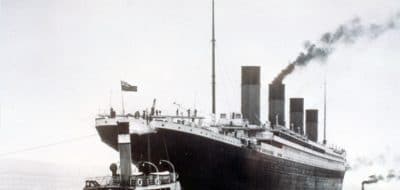
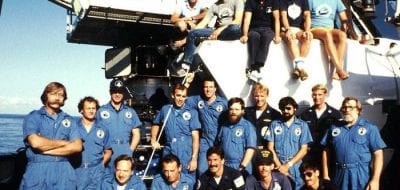
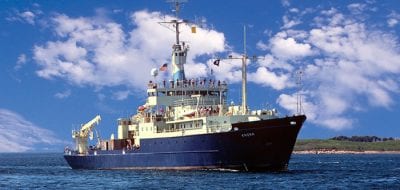
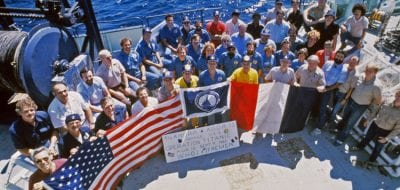

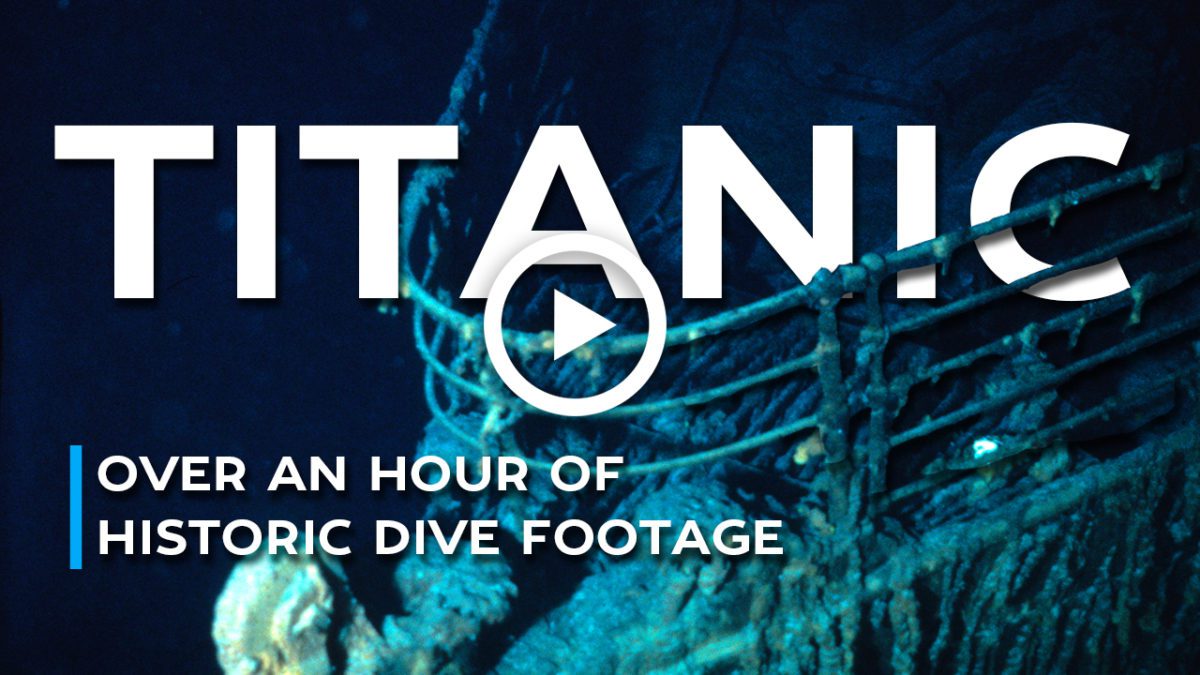
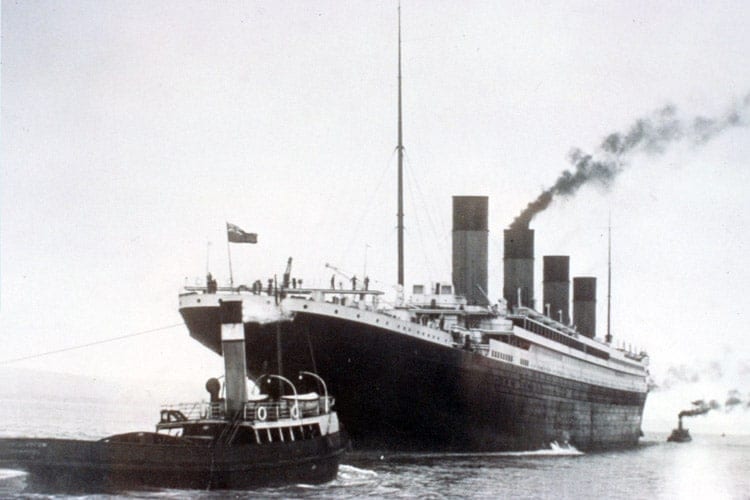

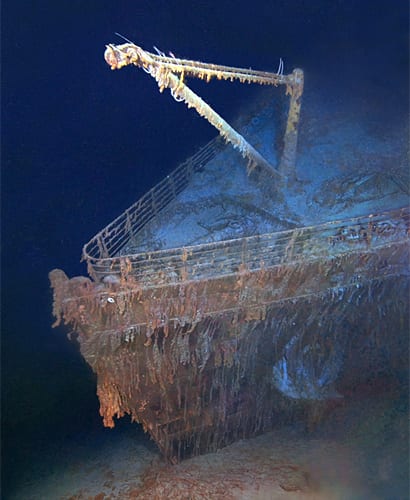
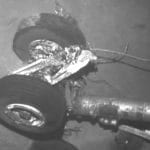 Air France Flight 447
Air France Flight 447 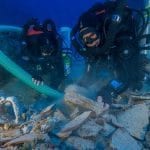 Antikythera Shipwreck
Antikythera Shipwreck